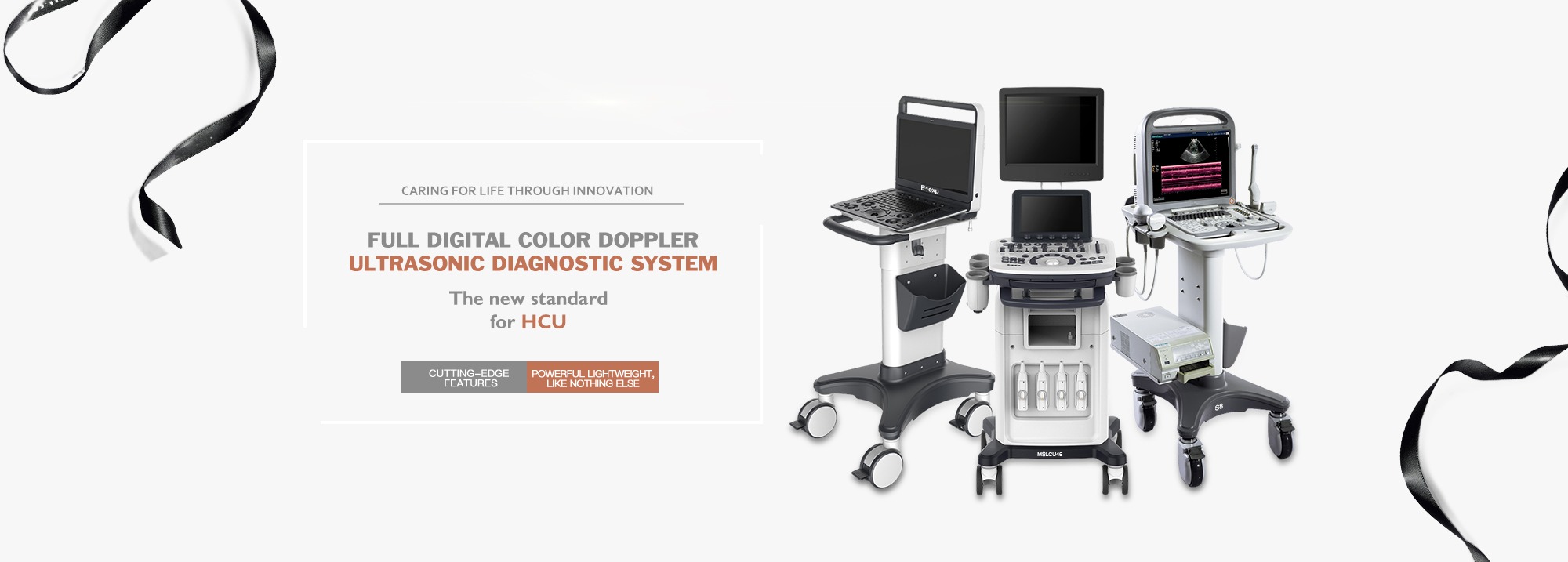Ultrasound technology has revolutionized the field of medical imaging, providing healthcare professionals with a non-invasive and accurate tool to diagnose various conditions. From checking the health of a developing fetus to evaluating the function of organs, ultrasound scans have become a routine part of modern healthcare. However, not all ultrasounds are created equal, and selecting the appropriate ultrasound machine for your needs is crucial. In modern medicine, ultrasound has become an indispensable tool for diagnosing a variety of medical conditions. Its non-invasiveness, cost-effectiveness and ability to generate real-time images make it the first choice of medical professionals. From detecting pregnancy complications to assessing the function of internal organs, ultrasound plays a vital role in providing an accurate diagnosis.
In this article, we will discuss three different types of ultrasounds and their applications in different medical scenarios and explore the different applications of ultrasound, its benefits, and what it means in the field of medical imaging.
1. First Trimester Ultrasound:
During pregnancy, a first-trimester ultrasound is typically performed between 6 and 12 weeks to assess the health of the developing fetus. This ultrasound aims to confirm the pregnancy, determine the gestational age, check for multiple pregnancies, and identify potential complications such as ectopic pregnancies or miscarriages. It is an essential tool for monitoring the well-being of both the mother and the baby
Performing a first-trimester ultrasound requires a machine that provides high-resolution images with excellent clarity. The home ultrasound machine may not be suitable for this purpose, as it is primarily designed for personal use and lacks the advanced features required for accurate and detailed fetal assessment. It is advised to consult a healthcare professional who can guide you through the process and perform the ultrasound in a controlled medical environment.
2. 19-Week Ultrasound:
The 19-week ultrasound, also known as the mid-pregnancy scan or anatomy scan, is a crucial milestone in prenatal care. This scan evaluates the baby's anatomy, checks its growth, and screens for potential abnormalities in the organs, limbs, and other body structures. It is an exciting and important ultrasound that provides parents with a visual image of their baby and reassurance about its health.
For a 19-week ultrasound, a more advanced machine is required to capture detailed images and accurately assess the fetal anatomy. While the availability of home ultrasound machines may tempt some parents, it is important to remember that the expertise of a trained sonographer plays a significant role in determining the scan's accuracy. Therefore, it is recommended to visit a healthcare facility equipped with a high-resolution ultrasound machine and experienced professionals to conduct this scan.
Ultrasound imaging is not limited to pregnancy-related scans. It plays a critical role in diagnosing various medical conditions affecting different organs and body systems. Let's explore some specialized ultrasounds and the scenarios in which they are used.
4. Appendix Ultrasound:
When patients present with symptoms such as abdominal pain and fever, an appendix ultrasound is often performed to assess for appendicitis. This non-invasive imaging technique helps identify inflammation or infection in the appendix, aiding in prompt diagnosis and appropriate treatment.
5. Epididymitis Ultrasound:
Epididymitis is the inflammation of the epididymis, a tube located at the back of the testicles that stores and transports sperm. An epididymitis ultrasound is used to evaluate the testicles and epididymis for infection, blockage, or other abnormalities that may cause pain, swelling, or discomfort in the scrotum.
6. Liver Cirrhosis Ultrasound:
Liver cirrhosis is a chronic condition characterized by scarring of the liver tissue, often resulting from long-term liver damage. Ultrasound imaging can help assess the degree of liver damage, identify signs of cirrhosis, and monitor the progression of the disease.
Lymph nodes are essential components of the body's immune system and can become enlarged or abnormal due to underlying infections or diseases, such as cancer. Lymph node ultrasound enables healthcare professionals to evaluate the size, shape, and characteristics of lymph nodes, aiding in the diagnosis and management of various conditions.
Apart from pregnancy-related assessments, ultrasound imaging is also used to evaluate the uterus in non-pregnant individuals. This type of ultrasound helps diagnose conditions such as fibroids, polyps, or other abnormalities in the uterus, helping guide treatment options and improve overall reproductive health.
9.Testicular Ultrasound:
Testicular ultrasound is commonly used to assess abnormalities in the testicles such as lumps, pain, or swelling. It helps diagnose conditions like testicular torsion, tumors, cysts, or varicoceles, allowing for appropriate treatment and follow-up care.
In conclusion, ultrasound technology has transformed the world of medical imaging, providing invaluable insights into various medical conditions. However, it is crucial to choose the right ultrasound machine for specific purposes. While home ultrasound machines may offer convenience, they may not possess the advanced features and expert guidance necessary for accurate diagnosis. For specialized ultrasounds, visiting a healthcare facility with dedicated professionals and high-resolution machines ensures optimal results. Remember, your health and well-being deserve nothing less than the best ultrasound technology available.
Post time: Sep-02-2023












